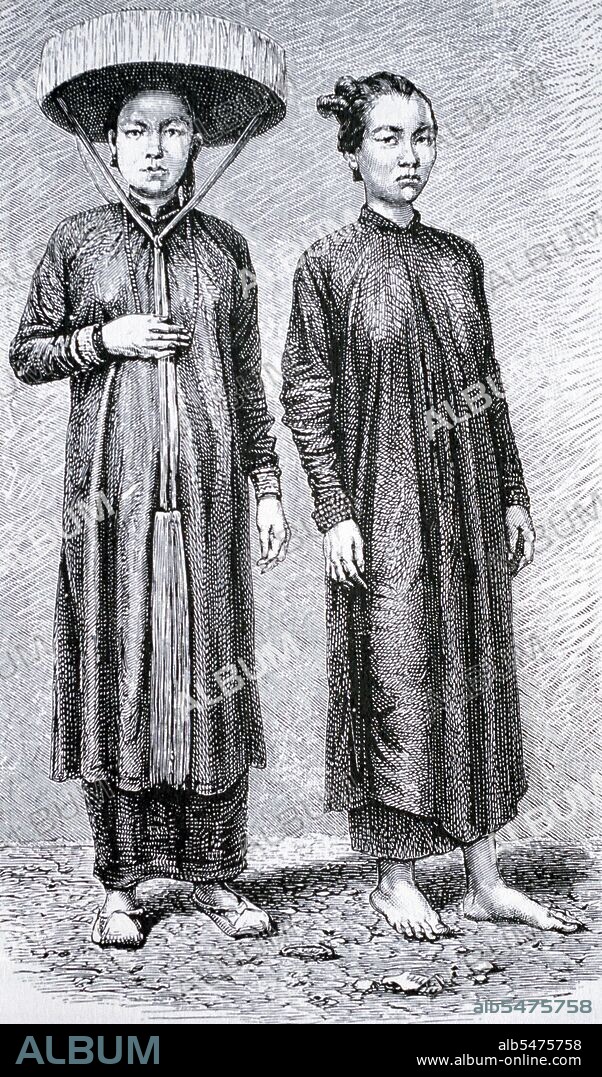alb5475758
Vietnam: A well-to-do Vietnamese woman of Saigon wearing áo ngu thân gown, together with her servant,1872

|
Ajouter à une autre Lightbox |
|
Ajouter à une autre Lightbox |



Avez-vous déjà un compte? S'identifier
Vous n'avez pas de compte ? S'inscrire
Acheter cette image

Titre:
Vietnam: A well-to-do Vietnamese woman of Saigon wearing áo ngu thân gown, together with her servant,1872
Légende:
Voir la traduction automatique
The áo ngu thân had a loose fit and sometimes had wide sleeves. Wearers could display their prosperity by putting on multiple layers of fabric, which at that time was costly. The áo ngu thân had two flaps sewn together in the back, two flaps sewn together in the front, and a 'baby flap' hidden underneath the main front flap. The gown appeared to have two-flaps with slits on both sides, features preserved in the later ao dai. Compared to a modern ao dai, the front and back flaps were much broader and the fit looser. It had a high collar and was buttoned in the same fashion as a modern ao dai.
Crédit:
Album / Pictures From History/Universal Images Group
Autorisations:
Modèle: Non - Propriété: Non
Questions sur les droits?
Questions sur les droits?
Taille de l'image:
2997 x 5100 px | 43.7 MB
Taille d'impression:
25.4 x 43.2 cm | 10.0 x 17.0 in (300 dpi)
Mots clés:
ART (CATÉGORIE) • ART • ASIE • ASIE, CONTINENT • CONTINENT ASIE • DESSIN • DESSINER • FEMELLE • FEMM • FEMME • FRAVURE • GRAVURE • HISOIRE • HISTOIRE • MODE • MODE: MASCULINE • MOTIF • STYLE • TECHNIQUE: DESSIN • VETEMENT: MODE • VIETNAM • VIETNAMIEN
 Pinterest
Pinterest Twitter
Twitter Facebook
Facebook Copier le lien
Copier le lien Email
Email
